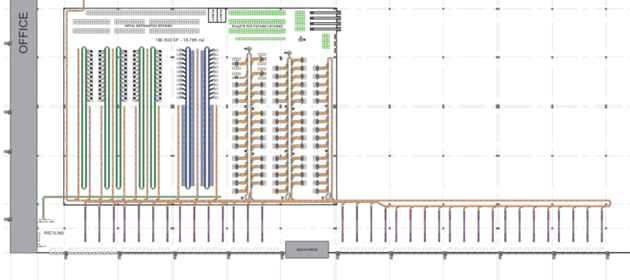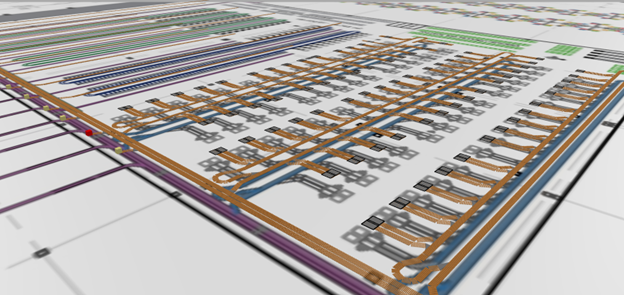Case Study: Simulation Helps Identify Bottlenecks and Optimize the Design of a Warehouse to Maximize Throughput
Overview
Our client is eager to design one of the largest warehouses in North America to support their soaring retail traffic volumes for the next 10 to 15 years.
With this being a greenfield analysis type of project, our client has many questions to answer like:
- How many dock doors would be required to handle incoming truck volumes?
- How many resources (forklifts, pallet jacks…) would be required to unload trucks and reduce turnaround time?
- Would the designed warehouse operations tackle and clear inbound volumes and reach desired outbound throughputs?
It is clear that this is not an average day-to-day endeavor that could be solved using simple or even complex math. With resource interaction and dependencies at the heart of this business problem, simulation would be the only time and budget-efficient solution to help business leaders make the right decisions every time.
How Much Can It Take?
With 50+ inbound dock doors and staging areas, complex pallet/SKU categorization, sortation stations, and a massive conveyor system at the heart of it, our client knew that simulation was their best bet to validate the current warehouse designs and stress test their “virtual” system.
Let’s look at the truck unload activity as an example: this is not a fixed-time activity that we can use to calculate how many trucks we could unload during a given day. The unloading of a truck delay depends on various factors:
- Arrival schedule/lateness of a truck
- The size and load of a truck
- The availability of dock doors
- Staging area volumes/capacities
- Forklift/pallet jack availability
Simulation is the only tool that takes all these factors into consideration and helps assess and mitigate the right bottlenecks.

The Solution to Flagging Bottlenecks
The first step was to collect data on the current warehouse operations. This included information on the warehouse layout, order fulfillment processes, and staffing levels.
The collected data was then used to develop a simulation model using Anylogic. The model was designed to represent the current warehouse operations plan and to allow the testing of the system against forecasted increasing inbound volumes.
The simulation model was then used to test different scenarios to identify the most effective changes to prepare the warehouse for increased future volumes. The scenarios tested included changes to the warehouse layout, conveyor speeds, order fulfillment processes, and staffing levels.
Preliminary run results raised some flags about the ability of the main conveyor and the processing stations combo to clear the incoming inbound volumes. With this slow turnaround time of inbound pallets at the staging areas, truck queues were accumulating in the yard.
Anticipation Avoided Costly Design Mistakes
By modeling the current conveyor system and estimating the impact of increased volumes, the simulation was able to anticipate and mitigate operational bottlenecks before the final on-site implementation saving a lot of money in the process. This allowed the client to identify areas of improvement and develop recommendations for the inbound conveyor system redesign.
With the model now in place, our client can try out various conveyor schemas and operational logic to validate and verify its success virtually before the final sign-off.

Take Design Decisions With Confidence With SimWell
As logistics become more complex, warehouse managers are turning to simulation to test changes and understand which decisions are best before investing time and money in a real-world application.
With a simulation model built by SimWell, you will save time and money by avoiding costly mistakes. Contact us to see how we can help you to get the best out of your warehouses.






